Sources
- Bertoni, Giulio. I Trovatori d'Italia: Biografie, testi, tradizioni, note. Rome: Società Multigrafica Editrice Somu, 1967 [1915].
Obs de Biguli (fl. 1220) was a troubadour from Lombardy and one of the few troubadours known by name none of whose works survive. He is mentioned by name only in a poem by Guilhem Raimon:
This was probably written in Venetia at the court of the Da Romano family on the occasion of the Emperor Frederick II (the rei [king] of the song) in 1220. Though the poem does not explicitly identify Obs as a troubadour, many subsequent scholars of the Italian troubadours have suspected that he was.
While his first name is probably an Occitan translation of the Italian Obizzo, his surname is an Occitanisation of either Bigolini, a family from Treviso that moved to Padua, or Bigoli, a family of Piacenza. Unfortunately, no Obizzo is known from the twelfth century in either family.
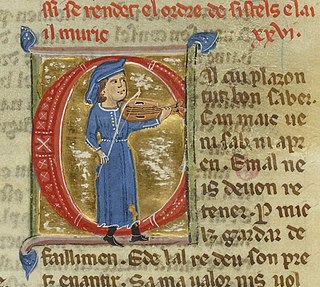
A troubadour was a composer and performer of Old Occitan lyric poetry during the High Middle Ages (1100–1350). Since the word troubadour is etymologically masculine, a female troubadour is usually called a trobairitz.
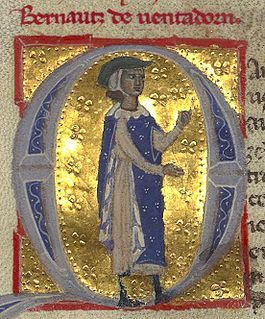
Bernart de Ventadorn was a prominent troubadour of the classical age of troubadour poetry. Now thought of as "the Master Singer," he developed the cançons into a more formalized style which allowed for sudden turns. He is remembered for his mastery as well as popularisation of the trobar leu style, and for his prolific cançons, which helped define the genre and establish the "classical" form of courtly love poetry, to be imitated and reproduced throughout the remaining century and a half of troubadour activity.
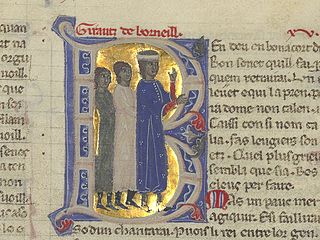
Giraut de Bornelh, whose first name is also spelled Guiraut and whose toponym as de Borneil or de Borneyll, was a troubadour connected to the castle of the viscount of Limoges. He is credited with the formalisation, if not the invention, of the "light" style, or trobar leu.
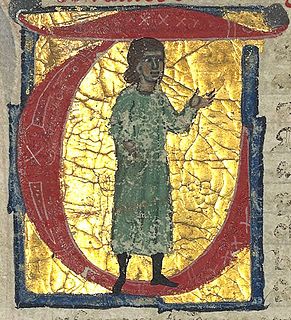
Sordello da Goito or Sordel de Goit was a 13th-century Italian troubadour. His life and work have inspired several authors including Dante Alighieri, Robert Browning, and Samuel Beckett.

Peire Cardenal was a troubadour known for his satirical sirventes and his dislike of the clergy. Ninety-six pieces of his remain, a number rarely matched by other poets of the age.

Raimon de Miraval(h) was a troubadour and, according to his vida, "a poor knight from Carcassonne who owned less than a quarter of the castle of Miraval." Favoured by Raymond VI of Toulouse, he was also later associated with Peter II of Aragon and Alfonso VIII of Castile. His senhal for Raymond VI was Audiart.

Pons de Capduelh was a troubadour from the Auvergne, probably from Chapteuil. His songs were known for their great gaiety. He was a popular poet and 27 of his songs are preserved, some in as many as 15 manuscripts. Four of his cansos survive with musical notation.

Peirol or Peiròl was an Auvergnat troubadour who wrote mostly cansos of courtly love in the late twelfth and early thirteenth centuries. Thirty-four surviving poems written in Occitan have been attributed to him; of these, seventeen have surviving melodies. He is sometimes called Peirol d'Auvergne or Peiròl d'Auvèrnha, and erroneously Pierol.
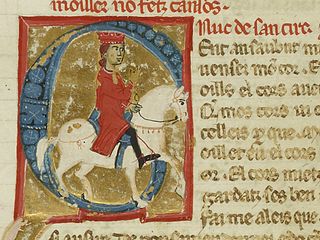
Uc de Saint Circ or Hugues (Hugh) de Saint Circq was a troubadour from Quercy. Uc is perhaps most significant to modern historians as the probable author of several vidas and razos of other troubadours, though only one of Bernart de Ventadorn exists under his name. Forty-four of his songs, including fifteen cansos and only three canso melodies, have survived, along with a didactic manual entitled Ensenhamen d'onor. According to William E. Burgwinkle, as "poet, biographer, literary historian, and mythographer, Uc must be accorded his rightful place as the 'inventor' (trobador) of 'troubadour poetry' and the idealogical trappings with which it came to be associated."
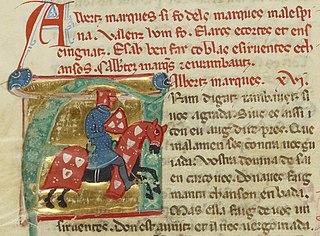
Albert Malaspina (1160/1165–1206/1212), called Alberto Moro and lo marches putanier, was a member of the illustrious Malaspina family. He was a noted troubadour and patron of troubadours. Albert disputes with Peire de la Caravana the position of earliest native Italian troubadour.

Peire Raimon de Tolosa was a troubadour from the merchant class of Toulouse. He is variously referred to as lo Viellz and lo Gros, though these are thought by some to refer to two different persons. On the other hand, lo Viellz could refer to his being of an early generation of troubadours. Eighteen of Peire Ramon's poems survive, one canso with a melody.

Rambertino di Guido Buvalelli, a Bolognese judge, statesman, diplomat, and poet, was the earliest of the podestà-troubadours of thirteenth-century Lombardy. He served at one time or other as podestà of Brescia, Milan, Parma, Mantua, Genoa, and Verona. Ten of his Occitan poems survive, but none with an accompanying melody. He is usually regarded as the first native Italian troubadour, though Cossezen and Peire de la Caravana may precede him. His reputation has secured a street named in his honour in his birthplace: the Via Buvalelli Rambertino in Bologna.
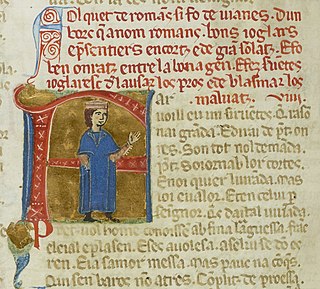
Falquetde Romans was the most famous troubadour attached to the court of Frederick II, Holy Roman Emperor, where he garnered a high reputation despite the fact that his career began as a jongleur. His surviving work consists of fourteen or fifteen pieces: seven sirventes, three tensos, two or three cansos on courtly love, a salut d'amor of 254 lines, and a religious alba. His poetry is, in general, clear and elegant, and he was apparently very religious.

Gui de Cavalhon, Cavaillo, or Gavaillo was a Provençal nobleman: a diplomat, warrior, and man of letters. He was probably also the Guionet who composed tensos and partimens with Cadenet, Raimbaut de Vaqueiras, Mainart Ros, Pomairol, and a certain Guillem.

Pistoleta was a Provençal troubadour. His name means "little letter (epistle)" in Occitan. He left behind eleven songs, comprising nine cansos and two tensos. Some of his pieces are assigned to an otherwise unknown Jordan de Born in the table of contents of chansonnier C, a fourteenth-century Occitan manuscript.

Garsenda was the Countess of Provence as the wife of Alfonso II from 1193 and the Countess of Forcalquier in her own right from 1209 and subsequently united with Provence. She was also a patron of Occitan literature, especially the troubadours, and herself wrote some lyric poetry and is counted among the trobairitz as Garsenda de Proensa. She was, in the words of her most recent editors, "one of the most powerful women in Occitan history".
Isnart or Iznart d'Entrevenas or d'Antravenas was a Provençal troubadour, the son of Raimon d'Agout, a patron of troubadours, and husband of Beatrice, daughter of Jaufre Reforzat de Trets.
Chardon de Croisilles or de Reims was an Old French trouvère and possibly an Occitan troubadour. He was probably from Croisilles, but perhaps Reims. He is associated with the school of trouvères in and around Arras. Chardon wrote four chansons d'amour, two jeux partis, and one partimen.

Conrad Malaspina, also known as L’Antico or The Old was an Italian nobleman who lived in the 12th century. There is no certainty about Conrad's birthdate but most historians agree that it is around 1180, his death date is also uncertain but it is speculated to be around July 1254. Conrad was the forefather of the "Spino Secco" branch of the Malaspina family. Conrad Malaspina's achievements were of fundamental importance for the way Italian territories were shaped. He had very close relationships with Emperor Frederick II as well as many intellectuals and political figures of the time.
Bernart de Bondeills was a 13th-century Occitan troubadour known from only one composition, the canso Tot aissi·m pren com fai als Assesis, found in chansonnier M, BnF Paris, f.f. 12474. Although originally from the Auvergne, he worked at the court of the north Italian nobleman Ottone del Carretto, a prolific patron of troubadours.